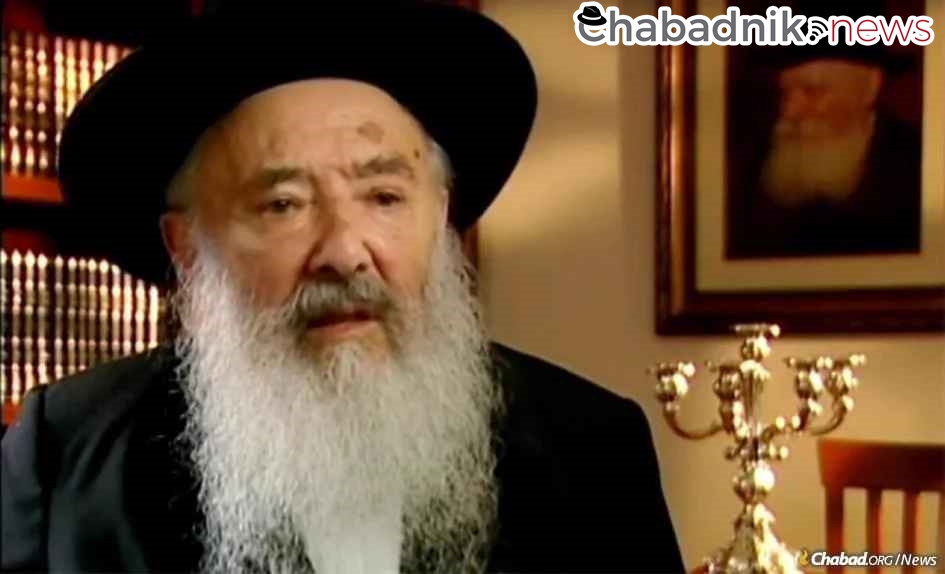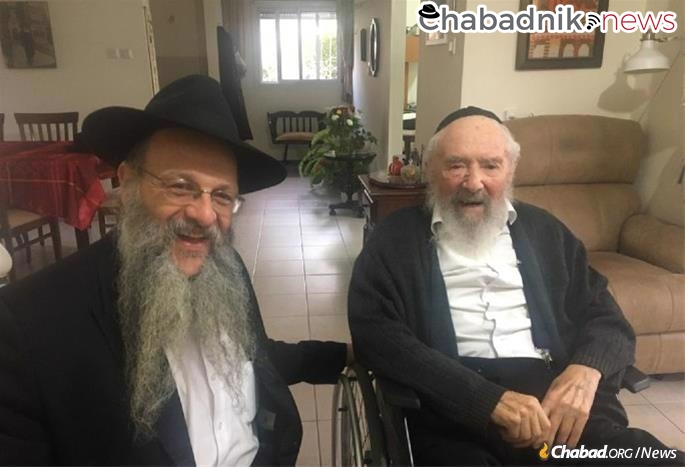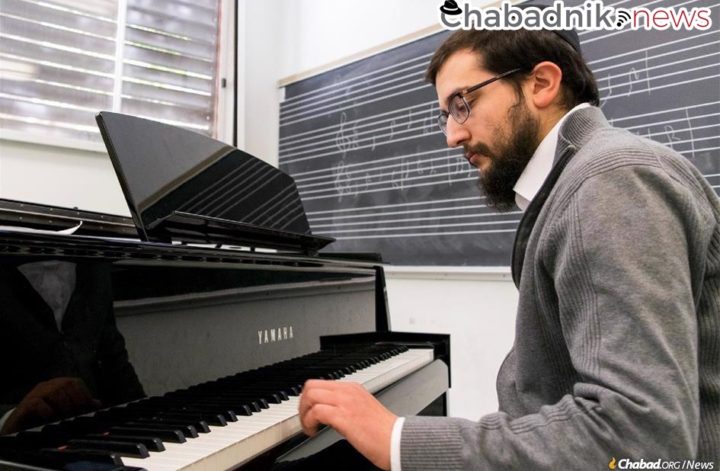After surviving the Holocaust, he went on to establish the first yeshivah in Brazil

When Rabbi Chaim Binjamini established a yeshivah in Petropolis, outside Rio de Janeiro, it made history in Brazil. It had 20 students: 10 from São Paulo, four from Rio de Janeiro, three from Belem, two from Porto Alegre and one from Curitiba. Today, most of the 110 Chabad-Lubavitch emissaries in Brazil—and many others across Latin America—were his students, educated in Yeshiva Colegial Machane Israel of Petropolis. He passed away on Nov. 3 in Israel.
He was born Chaim Fisher on Dec. 3, 1922, in Budapest, Hungary, to Rabbi Binyamin Zev and Chaya Leah Fisher. His father was a rabbi and teacher. Chaim studied in yeshivahs in Hungary until World War II forced them to close. He continued his studies privately under the tutelage of his uncle, Rabbi Yitzchak Panet of Kunszentmiklós, and was ordained as a rabbi by him.
In 1943, he was appointed rabbi of Karcag, where he served for a short time until the Germans occupied Hungary and he was sent to a labor camp outside Budapest.
The young rabbi was determined to hold on to his Judaism as much as possible and smuggled a pair of tefillin into the camp with him. Work began before daybreak (the earliest time to don tefillin), so Binjamini brought them with him to the pits where he worked. There, hidden from the guards, one by one, each man wore the tefillin for a moment before passing them to another. Those lower down would first use them, while those above served as lookouts; when they spied a guard approaching, they spread the word and the tefillin were hastily removed.
Fatigue and starvation were the norm, and one day, while Binjamini was praying, the lookout missed the approaching guard and the game was up. “I caught you!” yelled the enraged guard, “You are communicating with the enemy!” He commanded Binjamini to get out and grabbed his precious tefillin. “I thought it was all over,” Binjamini recalled in Yeshivah Shel Maalah, a book in Hebrew about the Machane Israel yeshivah. Suddenly, the guard returned and handed them back. “Until today, I don’t know why, perhaps he showed his commanders the “communication device” and they laughed at him … ,” Binjamini surmised.
For a time, Binjamini found refuge at the Glass House under the protection of Swedish diplomat Carl Lunz, where he also procured visas to escape Hungary. But the Germans didn’t honor his papers and instead deported him to Bergen-Belsen.
There, in 1945, he and his fellow inmates managed to read the Torah before Purim—the biblically mandated portion of Zachor(“You shall remember what Amalek did to you … ”)—with a Torah scroll they borrowed from another division of the camp, smuggled through an electric fence manned by machine-gun toting Nazis. On Purim, they read the Megillah twice.
On the day after Passover, as typhus ravaged the camp, the Nazis herded the Jews onto trains to escape the Allied approach. On April 13, at Farsleben, near Magdeburg, Germany, as their captors lined them up on the banks of the Elbe River and prepared to shoot them, the first American tank appeared. Binjamini recalled that it was driven by a Jewish soldier named Abraham Cohen. The American tank aimed its turret at the Germans, who laid down their arms. Binjamini and the other 2,500 survivors were liberated.
Binjamini made his way to Israel, where he was sent to Kibbutz Yavne in 1945. He served with the Haganah, the precursor to the Israel Defense Forces. The British exiled him to Cyprus for his role in aiding the immigration of Jews to British Mandatory Palestine. He remained there until the establishment of modern-day Israel in 1948.
He married Rivka Steinberg in 1951; shortly afterwards, they left the kibbutz and settled in Jerusalem. In 1955, the couple was sent to Brazil by the Jewish agency to run the TTH-Barilan day school in Rio de Janeiro. In 1958, their term ended and they returned to Israel, settling in Masuot Yitzchak, a small village in the south.
There, he befriended a group of Chabad Chassidim and was enthralled by their spirit. He began to study Tanya with them and initiated contact with the Rebbe—Rabbi Menachem M. Schneerson, of righteous memory—which blossomed into a decades-long relationship. He would regularly write to the Rebbe about his activities until the Rebbe’s passing in 1994.
For the next few years, he taught at the Ohr Etzion yeshivah in Merkaz Shapiro in southern Israel, until 1963, when he was sent back to Brazil by the Jewish Agency. There, he befriended Rabbi Shabsi Alpern and other local Chabad emissaries and worked hand-in-hand with them. In 1966, he established Yeshiva Colegial Machane Israel in Petropolis, just outside Rio de Janeiro. That year, the rabbi traveled to the Rebbe for his first time. The Rebbe’s secretary, Rabbi Binyamin Klein, awaited him at the airport.
Soon after his arrival, he went to a farbrengen at 770—Chabad-Lubavitch headquarters in Brooklyn—for the 12th of Tammuz. A prime spot was arranged for him. The Rebbe turned to Binjamini, telling him: “Say l’chaim, for you are a shliach [‘emissary’].”
‘He Was the Life Force of Yiddishkeit’
The shlichus in Brazil changed the Jewish face of the country. A girls’ school was also established in Petropolis, and over the decades, thousands of young men and women studied there. But it didn’t come easy. “The concept of a yeshivah was foreign,” he explained in an interview with JEM. The local rabbis felt Brazil wasn’t the kind of place that could ever have a yeshivah. “Young man, hair will grow on the palm of your hand before there will be a yeshivah here,” they told him. He wasn’t convinced.
“Rabbi Chaim Binjamini spearheaded a revolution in Brazil,” says his student, Rabbi Shamai Ende, director of Beit Chabad S. Andre and dean of Yeshiva Tomchei Tmimim Lubavitch Ohel Menachem, a yeshivah for high school aged boys in São Paulo. “Most of the Judaism in Brazil today is to his credit through his own work and the work of his students—the army of Chabad emissaries in Brazil—and Torah-observant laymen of all backgrounds. He was the life force of Yiddishkeitin Brazil.”
Binjamini’s influence was felt across the continent, even in Peru, where his student, Rabbi Schneur Zalman Blumenfeld led Chabad-Lubavitch of Peru until his sudden passing on Oct. 29.

Ende describes the love Binjamini had for all of his students. “He was like a father to us all. We loved him, and he loved us.”
Binjamini spent his last several years in Kfar Chabad, Israel. In addition to his wife, he is survived by their children: Rabbi Avraham Dovid Binjamini (Petropolis, Brazil), Rochel Lerer (Kfar Chabad, Israel); Sarah Feigelstock (Buenos Aires, Argentina); and many grandchildren and great-grandchildren.




